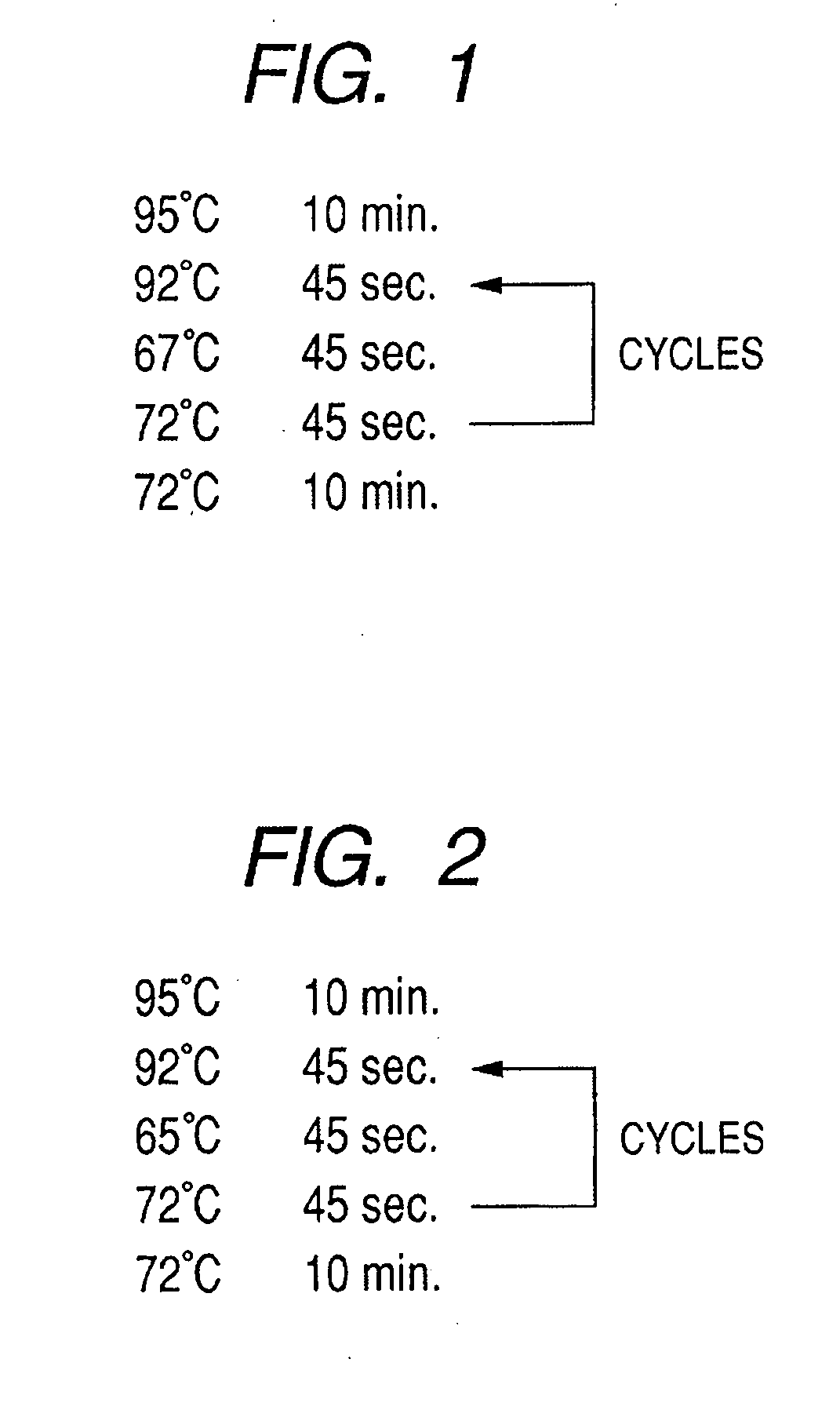Probe set, probe immobilized carrier and gene examination method
- Summary
- Abstract
- Description
- Claims
- Application Information
AI Technical Summary
Benefits of technology
Problems solved by technology
Method used
Image
Examples
example 1
[0129] In the following example, detection of microorganisms using 2 Step PCR method will be described.
[0130]
[0131] Nucleic acid sequences shown in Table 1 were designed and synthesized as probes to be used for detection of the Candida albicans. More specifically, the following probe base sequences were selected from the 18S rRNA gene of Candida albicans. These probe base sequences were designed such that they could have a very high specificity with respect to the corresponding fungus, and sufficient hybridization sensitivity with no variation between the probe base sequences could be expected. The probe base sequences to be used are not limited to ones completely agreeing with those shown in Table 1, but probe base sequences having base lengths of about 20 to 30 and including the probe base sequences are also included in the probe base sequence shown in Table 1.
TABLE 1Name ofmicro-ProbeSEQ IDorganismNo.NOSequenceCandiaCA-115′ acgatacagggcccttttgggt 3′CA-225′ atctttttcgatgcgtactg...
example 2
[0193] In Examples described hereinafter, amplification of 9 kinds of microorganisms used in Example 1 will be explained.
[0194]
[0195] As 18S rRNA gene (target gene) amplification PCR primers for specimen amplification, nucleic acid sequences shown in Table 2 were designed.
[0196] More specifically, primer sets which specifically amplify the 18S rRNA genes, that is primers for which the specific melting points were made uniform as much as possible at the two end portions of the 18S rRNA gene coding region of a base length of about 1,700 were designed. The primers were designed so as to simultaneously amplify variant strains or a plurality of 18S rRNA gene coding regions present on the genome.
[0197] Further, even in an experimental system having particularly human genome and fungal genome mixed therein, the primers were designed so as to selectively amplify fungal genome only.
TABLE 15PrimerSEQ IDNoNOSequenceForwardF-1475′′gccctatcaactttcgatggtaggatPrimerag 3′ReverseR-1485′ aatgctc...
example 3
[0206] The following Example describes that a portion encoding 18S rRNA in human genome cannot be amplified by the primer used in Example 2.
[0207] As a template for PCR reaction, human genome was subjected to PCR reaction using the primer set in the same manner in Example 2. As a result, no band that was amplified by PCR was not detected, which confirmed that amplification of human genome cannot be conducted by the primer set of Table 15 in Example 2. This indicates that the primer set of the present invention can selectively amplify only a 18S rRNA gene of microorganism genome from a clinical specimen that may have human genome and fungal genome mixed therein.
PUM
| Property | Measurement | Unit |
|---|---|---|
| Mass | aaaaa | aaaaa |
| Angle | aaaaa | aaaaa |
| Strength | aaaaa | aaaaa |
Abstract
Description
Claims
Application Information
 Login to View More
Login to View More - R&D
- Intellectual Property
- Life Sciences
- Materials
- Tech Scout
- Unparalleled Data Quality
- Higher Quality Content
- 60% Fewer Hallucinations
Browse by: Latest US Patents, China's latest patents, Technical Efficacy Thesaurus, Application Domain, Technology Topic, Popular Technical Reports.
© 2025 PatSnap. All rights reserved.Legal|Privacy policy|Modern Slavery Act Transparency Statement|Sitemap|About US| Contact US: help@patsnap.com

